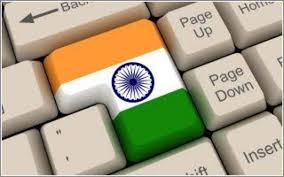Digitisation adoption by governments will bring about lifestyle changes in a country like India. But this can include new kinds of exclusion and problems.
Slowly, with paperless transactions, online availability of information, leveraging emerging tech, and partnerships with existing talent, we can expect a lifestyle change in a country. The pandemic has made it only too clear that government efficiency is a necessity that digital solutions can smoothly deliver.
Read more: FM´s Latest Crypto Stance Brings Positive Wave in Indian Crypto Community
Governments around the world are going digital as they realise the merits of implementing technology. In some cases, digitisation means cost cutting, in others, it leads to saving time and increased efficiency.
The pandemic has made it only too clear that government efficiency is a necessity that digital solutions can smoothly deliver
However, in our hurry to digitise, we cannot overlook newer problems that may deprive certain pockets of populations. Governments have to ensure digitisation for all.
Paperless Governance
While eliminating paper from a government office in itself is an attractive proposition, a paperless government can achieve much more. In the US, all government agencies have been directed to maintain paperless records, switching to a digital format by the end of 2022.
In India, in a bid to go paperless, the Ministry of Law and Justice are making Vidhi Sahitya Prakashan’s three journals available to the public free of cost in the form of PDF for 75 weeks.
The journals, which consist of the judgements pronounced by Supreme Court and High Courts in Hindi, are currently only accessible with cash or subscription in hard copy. With this move, these will be accessible through a search engine in just a few clicks, a display of transparency.
Paperwork is cumbersome for not just citizens but babus too. They would only be glad to punch in a few numbers instead of collecting reams of printouts
In another recent initiative towards going paperless, the Rural Development ministry launched SVAMITVA, a dashboard for monitoring the implementation of land records digitisation. The aim of the scheme is to provide an integrated property validation solution for rural India. The idea is that citizens leverage property as a financial asset with accurate land records for rural planning.
Further, the scheme is projected to help in deciding property tax, survey infrastructure formation, and GIS map. Government departments can leverage such information, leading to a reduction in property disputes and legal cases.
In a part of Smart City initiatives, the Gurugram Metropolitan Development Authority (GMDA) has launched My Gurugram App that will help guide commuters to the ‘right’ parking lots in real time. The app has been linked to the Indian Meteorological Department (IMD) and the Central Pollution Control Board (CPCB) websites.
Paperwork is cumbersome for not just citizens but babus too. They would only be glad to punch in a few numbers instead of collecting reams of printouts.
People-Friendly Civil Services
Even at the state level, digitisation, albeit slow, is seeping in.
The Kerala government has launched a few digital services in the Revenue Department, which includes a mobile application to pay land tax online. In fact, the state has been shifting several government departments online.
Last week, the Chief Minister of Kerala, Pinarayi Vijayan emphasised the need to digitise government services for ‘people-friendly civil services,’ a term often incomprehensible in the same sphere as government bureaucracy.
“Online systems are adequate to ensure efficiency and transparency of the government services. The e-services will be further expanded to make people-friendly civil service a reality in the state,” ET quoted Vijayan.
Tie Up with Existing Talent
Another step towards achieving e-governance is to join hands with the already talented and eager ecosystem. A recent example is the partnership between state-run Assam Electronics Development Corporation Ltd and Bengaluru technology startup iBus Networks.
Read more: A Global Governance Grid for a New UNSC: Strategic Foresight Group President Waslekar
Both entities have tied up to implement and run digital infrastructure on commercial premises. With the help of this collaboration, connectivity solutions on large campuses, IT parks, hospitals, SEZs and commercial buildings will be offered.
Not to Hurry
Even in systems that have been adopting digitisation, faults appear, which need to be corrected before the blame shifts to digitisation itself. Government agencies have to go forward along with those for whom policies are being placed.
Even in systems that have been adopting digitisation, faults appear, which need to be corrected before the blame shifts to digitisation itself
For example, a recent study supported by the Centre for Internet and Society found that thousands of Indian women were deprived of their share of food rations during the pandemic in the digitised Public Distribution System (PDS). The fault occurred when many women left one family and joined another after marriage, removing themselves from the family Ration Card, which is now linked to Aadhaar.
Such occurrences can cost the country in the long run. A big part of digitisation is digital literacy, the lack of which can leave a huge chunk of the population behind in the race to become digitised.












